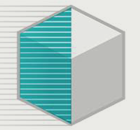
While the Brazilians call England the ‘inventors of football’ Brazil is without doubt its spiritual home. Five times winners, ironically when the World Cup was previously hosted in Brazil, they lost to Uruguay in front of over 175,000 fans in the iconic Maracana stadium.
After major construction issues, much publicised delays and some very nervous FIFA officials, some majestic stadia, were signed, sealed and delivered in time to host the opening games. If you’re planning a trip to Brazil this summer or are already there enjoying the football extravaganza, if you want anything sent, signed and delivered, Fastlane International’s courier services to and from Brazil provide the perfect solution.
Itaipava Arena Pernambuco (Recife)
Capacity: 46,000
The futuristic neon Itaipava Arena was completed on time, and hosted its first official friendly well ahead of the World Cup. Recife itself is a city of rivers and canals, as well as the impressive Boa Viagem Beach, 8km long and one of the best beaches in the region. One of Brazil’s most famous footballing sons, Rivaldo grew up here and it is also famous for its rainfall – on average it rains 225 days of the year here.

Estadio Jose Pinheiro Borda (Porto Alegre)
Capacity: 48,000
Home to Internacional, Porto Alegre’s stadium construction was a troubled one, much to the chagrin of the locals. Birthplace of famous Brazilian star (and David Seaman’s nemesis) Ronaldhino and the furthest south of all the World Cup venues, the stadium is located in the south of Porto Alegre on the banks of the river Guaíba, just over about 3.5 km from Porto Alegre’s historic city centre.
Arena da Amazônia (Manaus)
Capacity: 44,000
Much discussed venue in the heart of the Amazon rainforest with searing heat and debilitating humidity, this spectacular stadium is meant to resemble a traditional indigenous basket and hosted England’s opening match defeat to Italy. One of the more remote venues, Manaus is essentially the gateway to the Amazon rainforest for visitors looking to explore one of the great natural wonders of the world.
Arena Fonte Nova (Salvador)
Capacity: 55,000.
Salvador is Brazil’s ‘capital of happiness,’ home to the Central do Carnaval and renowned for its street parties. It’s also the birthplace of former Brazil international Bebeto and this all-new arena, with its unusual horse-shoe design was built with 92% of its construction using rubble from the previous demolished stadium.

Arena das Dunas (Natal)
Capacity: 43,000
One of the slowest built, but also one of the most dramatic of all the World Cup stadiums, this futuristic icon is designed to replicate the sand dunes that line its famous beaches. Natal is also famous for intense humidity, often reaching 97% in June. It is possibly even more famous for its Guinness World Record breaking cashew tree – it’s the largest in the world and bigger than a football pitch.
Estádio do Maracanã (Rio de Janeiro)
Capacity: 78,000
Along with Wembley, the Maracana is one of the world’s most famous football stadiums and once could hold a staggering 200,000 spectators. It was also where John Barnes scored his famous solo goal against Brazil in 1984. Overlooked by Rio’s famous Christ the Redeemer, the all-new Maracana is home to two of Brazil’s biggest teams Flamengo and Fluminense and will host the World Cup Final on 13 July.
Estadio Mineirao (Belo Horizonte)
Capacity: 64,000
Rather than a new build, this stadium was a redesign of an old venue as parts of the previous stadium were denoted a national monument. Surrounded by mountains, it has a had a comprehensive makeover and will host England V Costa Rica as well as one of the semi-finals. Belo Horizonte lies in an area of powerful magnetic fields, which has produced Rua do Amendoim, a street on which a car in neutral gear will travel uphill rather than down. Worth a visit.

Arena de Sao Paulo (Sao Paulo)
Capacity: 68,000
The new home for one of Brazil’s most famous clubs Corinthians, this gleaming white stadium contains 20,000 temporary seating and had one of the longest completion schedules. Chosen for Brazil’s opening game against Croatia, as well as the spectacular opening ceremony, it will host one of the semi-finals. The city itself is a cultural goldmine and a great place to explore.
Arena da Baixada (Curitiba)
Capacity: 41,000
The Arena da Baixada is located rather centrally in the city of Curitiba just south of the city centre and is one of the tournament’s updated relatively modern stadia. Curitiba was made the capital of Brazil for just three days thanks to a military junta in the 1960s. Now it is one of the prettiest cities in Brazil, complete with botanical gardens and stunning architecture.
Estadio Nacional de Brasilia (Brasilia)
Capacity: 70,000
This stadium took the place of the former Estadio Nacional Mané Garrincha and is officially the national stadium. Brasilia is the country’s capital and a UNESCO World Heritage Site. The stadium design of was inspired by the works of architect Oscar Niemeyer, famous for his role in the design of the city of Brasilia. Most characteristic feature are the 288 pillars that form the exterior and are holding up the roof. Will host the third-fourth playoff match.
Arena Castelao (Fortaleza)
Capacity: 67,000
Upgraded with a larger roof and an underground car park and one of the first venues to be ready, the stadium itself is in an unexciting part of a city famous for its nightlife. Most of the eating, drinking, and nightlife is located east of the centre in the Dragão do Mar and Iracema beach area, and running further east along the coast along Avenida Beira Mar up to the Mereiles area.

